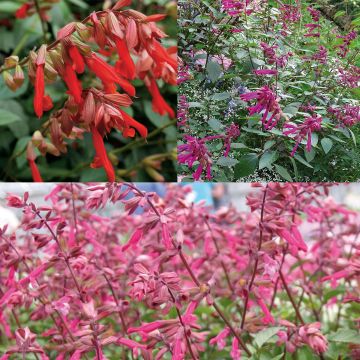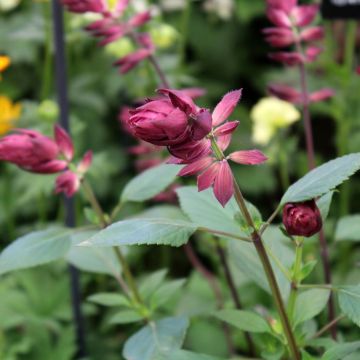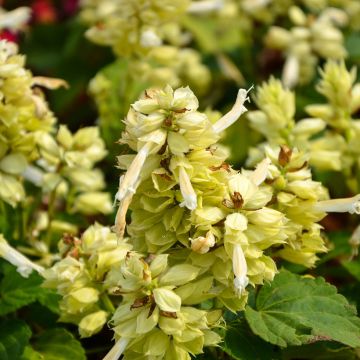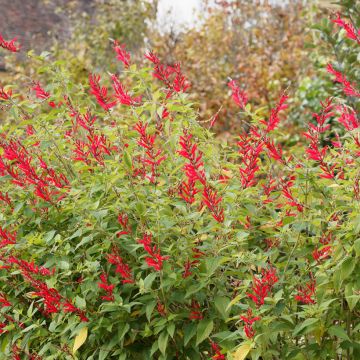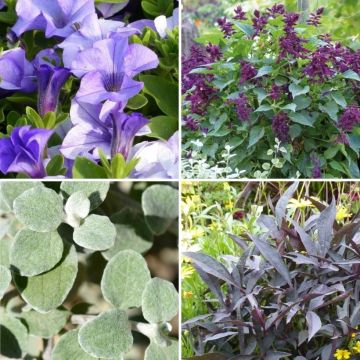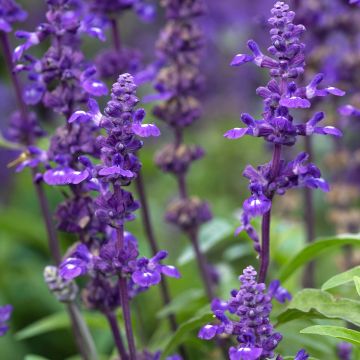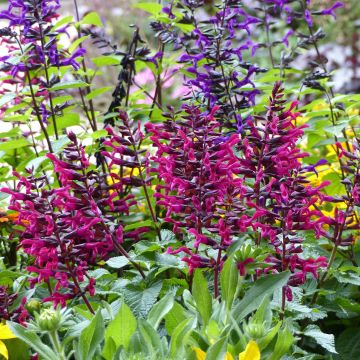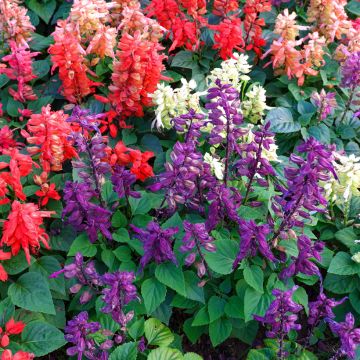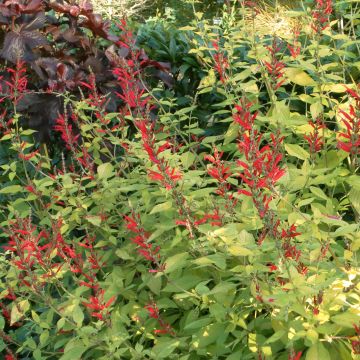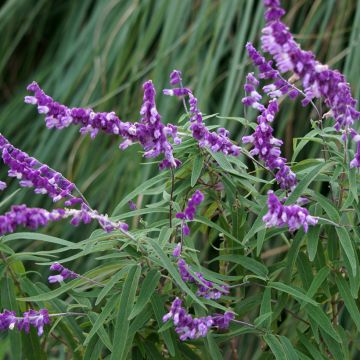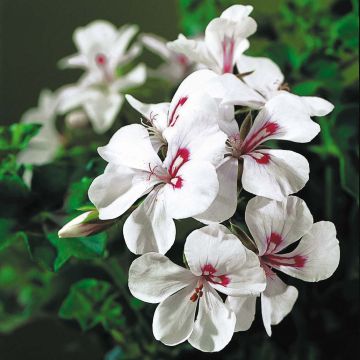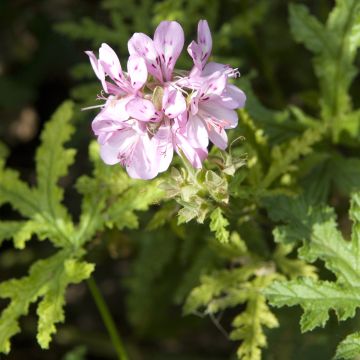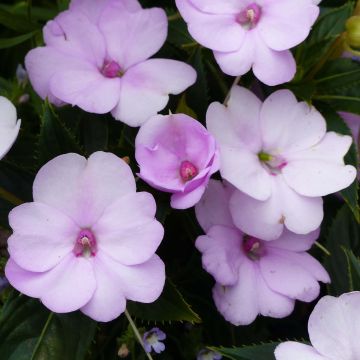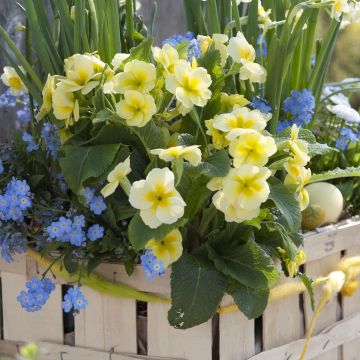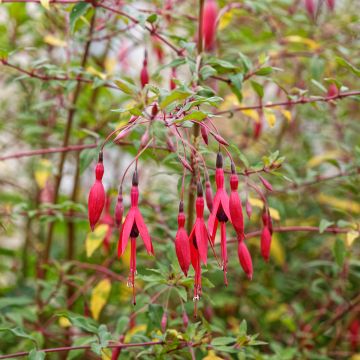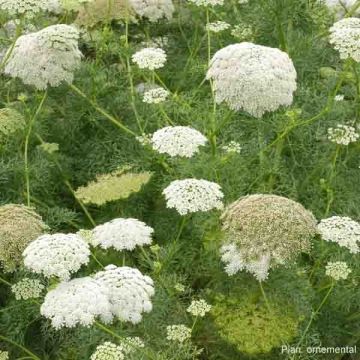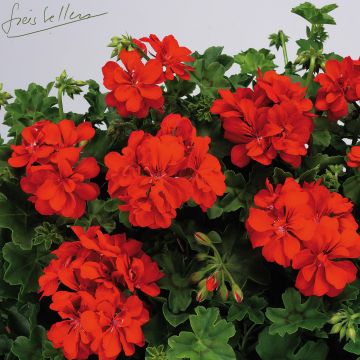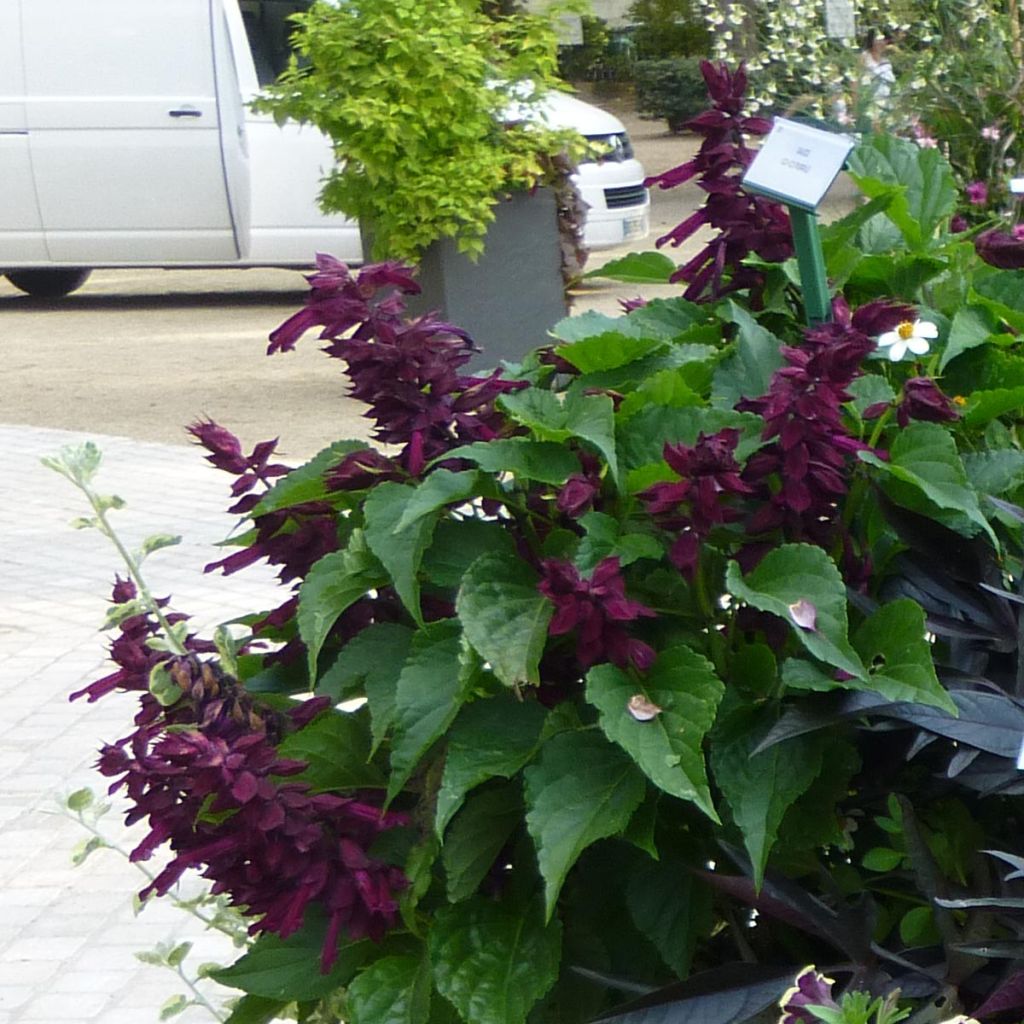

Sauge gogo purple
Salvia x spendens Gogo Purple
Salvia x spendens Gogo Purple
Sage
One of the young plants was delivered broken. It won't recover. The others look vigorous and are thriving.
christelle, 24/06/2024
This item cannot be shipped to the selected country
Delivery charge from €5.90
Delivery charge from €5.90
Delivery to Corse prohibited
More information
Schedule delivery date,
and select date in basket
This plant carries a 6 months recovery warranty
More information
We guarantee the quality of our plants for a full growing cycle, and will replace at our expense any plant that fails to recover under normal climatic and planting conditions.
From €5.90 for pickup delivery and €6.90 for home delivery
Express home delivery from €8.90.
From €5.90 for pickup delivery and €6.90 for home delivery
Express home delivery from €8.90.
Delivery to Corse prohibited: UE law prohibits the import of this plant from mainland France to Corse as part of the fight against Xylella fastidiosa. Please accept our sincere apologies.
More information
Does this plant fit my garden?
Set up your Plantfit profile →
Description
The Sage or Salvia splendens Gogo Purple is a new cultivar, offering dense, dark purple flowers in spikes for a very long period. Its vigorous growth allows it to reach a height of 1m (3ft) in just a few months. This plant is actually a perennial, but is grown as an annual in our climate. A highly floriferous selection, ideal for borders and containers.
The hybrid Sage Gogo Purple is a plant from the Lamiaceae family, derived from Salvia splendens, native to the hot and humid regions of Brazil at high altitudes. A herbaceous perennial in its country of origin, this fast-growing frost-sensitive plant offers one of the most remarkable flowerings in summer borders. Gogo Purple inherits its vigour, forming an upright clump that will reach a height of 1m (3ft) in just a few months, although the stems can be pinched in spring to achieve a denser and shorter plant. Its flowering is abundant from late spring until the first frost. This variety is adorned with tubular flowers gathered in short and dense spikes, of a rich purple-violet colour. The bracts surrounding the flowers are even darker. This plant bears oblong, dark green leaves in a 'spade' shape. This sterile variety does not produce seeds.
Annual sages are widely used as bedding plants, in flower beds where they succeed spring bulbs and bloom throughout the summer. They can also be used to fill containers on the patio. Their vibrant colours attract all eyes. 'Go Go Purple' offers a less vibrant colour than the usual red, making it an opulent yet elegant plant that complements well the pastel or even vibrant colours of the companion plants. Create a delightful combination by pairing it with Salvia farinacea 'Victoria' or clary sages.
Report an error about the product description
Salvia x spendens Gogo Purple in pictures
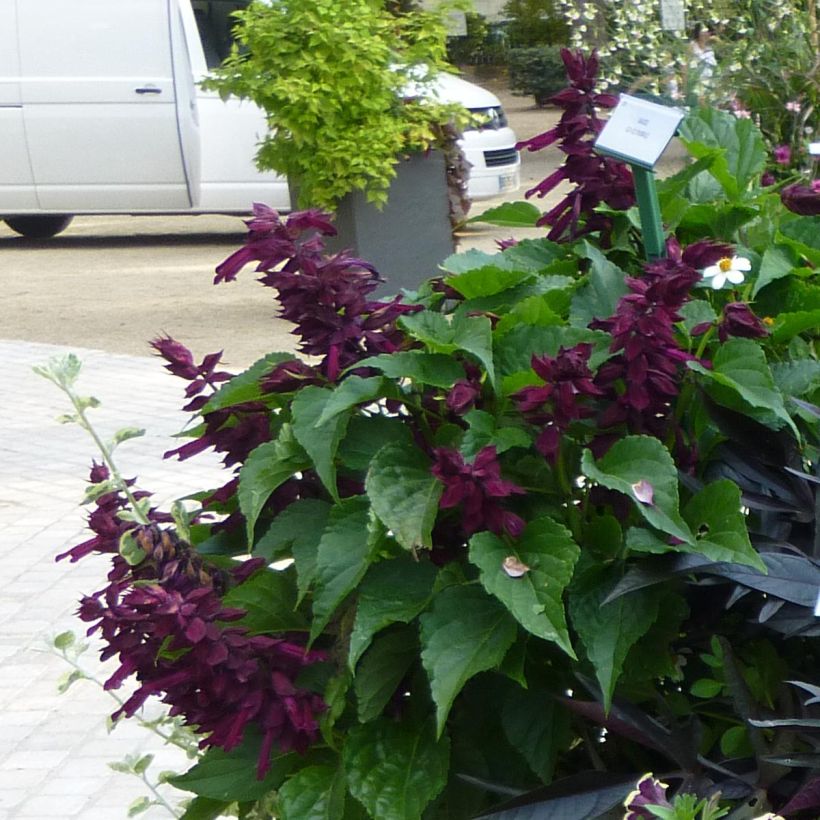



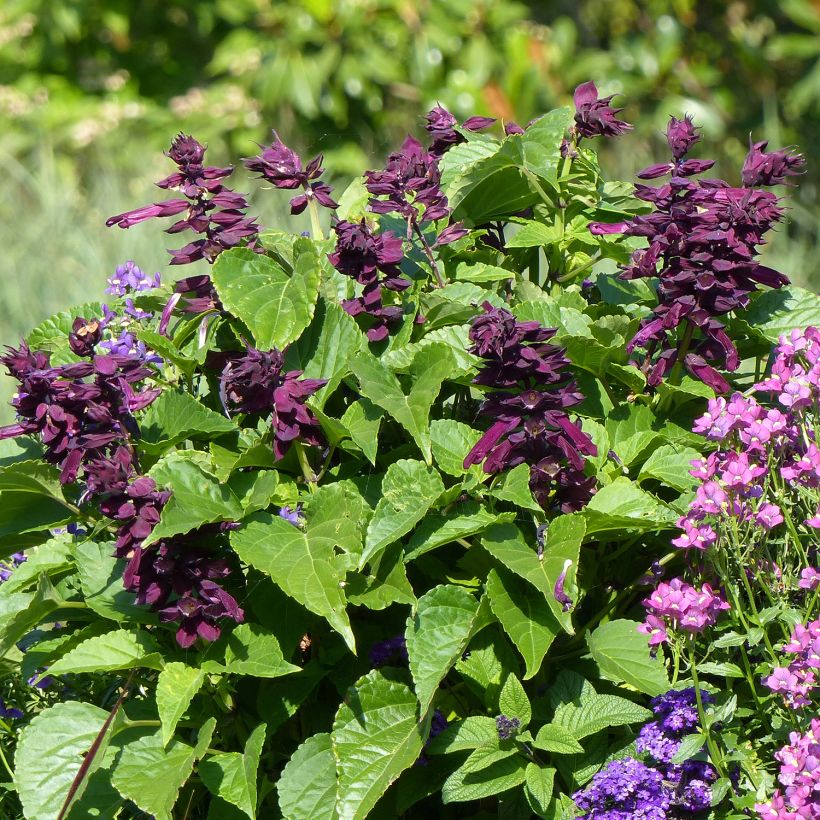

Flowering
Foliage
Plant habit
Botanical data
Salvia
x spendens
Gogo Purple
Lamiaceae
Sage
Cultivar or hybrid
Other Annual Sage
Planting and care
Plant your Gogo Purple salvias in a sunny location or possibly partial shade. They require a light and humus-rich soil and appreciate a fertiliser application. They tolerate a rather dry soil quite well, but make sure the roots stay damp by mulching them if there is intense heat. You can also plant your salvias in pots, where they will be regularly watered. Usually grown as annuals, they are actually delicate perennials: by bringing them indoors at the first frost, you can extend their flowering into autumn and winter. Outdoor cultivation is possible by the seaside, with proper winter mulching. Plan for light pruning in March.
Planting period
Intended location
Care
-
, onOrder confirmed
Reply from on Promesse de fleurs
Plug plants - Annuals
Haven't found what you were looking for?
Hardiness is the lowest winter temperature a plant can endure without suffering serious damage or even dying. However, hardiness is affected by location (a sheltered area, such as a patio), protection (winter cover) and soil type (hardiness is improved by well-drained soil).

Photo Sharing Terms & Conditions
In order to encourage gardeners to interact and share their experiences, Promesse de fleurs offers various media enabling content to be uploaded onto its Site - in particular via the ‘Photo sharing’ module.
The User agrees to refrain from:
- Posting any content that is illegal, prejudicial, insulting, racist, inciteful to hatred, revisionist, contrary to public decency, that infringes on privacy or on the privacy rights of third parties, in particular the publicity rights of persons and goods, intellectual property rights, or the right to privacy.
- Submitting content on behalf of a third party;
- Impersonate the identity of a third party and/or publish any personal information about a third party;
In general, the User undertakes to refrain from any unethical behaviour.
All Content (in particular text, comments, files, images, photos, videos, creative works, etc.), which may be subject to property or intellectual property rights, image or other private rights, shall remain the property of the User, subject to the limited rights granted by the terms of the licence granted by Promesse de fleurs as stated below. Users are at liberty to publish or not to publish such Content on the Site, notably via the ‘Photo Sharing’ facility, and accept that this Content shall be made public and freely accessible, notably on the Internet.
Users further acknowledge, undertake to have ,and guarantee that they hold all necessary rights and permissions to publish such material on the Site, in particular with regard to the legislation in force pertaining to any privacy, property, intellectual property, image, or contractual rights, or rights of any other nature. By publishing such Content on the Site, Users acknowledge accepting full liability as publishers of the Content within the meaning of the law, and grant Promesse de fleurs, free of charge, an inclusive, worldwide licence for the said Content for the entire duration of its publication, including all reproduction, representation, up/downloading, displaying, performing, transmission, and storage rights.
Users also grant permission for their name to be linked to the Content and accept that this link may not always be made available.
By engaging in posting material, Users consent to their Content becoming automatically accessible on the Internet, in particular on other sites and/or blogs and/or web pages of the Promesse de fleurs site, including in particular social pages and the Promesse de fleurs catalogue.
Users may secure the removal of entrusted content free of charge by issuing a simple request via our contact form.
The flowering period indicated on our website applies to countries and regions located in USDA zone 8 (France, the United Kingdom, Ireland, the Netherlands, etc.)
It will vary according to where you live:
- In zones 9 to 10 (Italy, Spain, Greece, etc.), flowering will occur about 2 to 4 weeks earlier.
- In zones 6 to 7 (Germany, Poland, Slovenia, and lower mountainous regions), flowering will be delayed by 2 to 3 weeks.
- In zone 5 (Central Europe, Scandinavia), blooming will be delayed by 3 to 5 weeks.
In temperate climates, pruning of spring-flowering shrubs (forsythia, spireas, etc.) should be done just after flowering.
Pruning of summer-flowering shrubs (Indian Lilac, Perovskia, etc.) can be done in winter or spring.
In cold regions as well as with frost-sensitive plants, avoid pruning too early when severe frosts may still occur.
The planting period indicated on our website applies to countries and regions located in USDA zone 8 (France, United Kingdom, Ireland, Netherlands).
It will vary according to where you live:
- In Mediterranean zones (Marseille, Madrid, Milan, etc.), autumn and winter are the best planting periods.
- In continental zones (Strasbourg, Munich, Vienna, etc.), delay planting by 2 to 3 weeks in spring and bring it forward by 2 to 4 weeks in autumn.
- In mountainous regions (the Alps, Pyrenees, Carpathians, etc.), it is best to plant in late spring (May-June) or late summer (August-September).
The harvesting period indicated on our website applies to countries and regions in USDA zone 8 (France, England, Ireland, the Netherlands).
In colder areas (Scandinavia, Poland, Austria...) fruit and vegetable harvests are likely to be delayed by 3-4 weeks.
In warmer areas (Italy, Spain, Greece, etc.), harvesting will probably take place earlier, depending on weather conditions.
The sowing periods indicated on our website apply to countries and regions within USDA Zone 8 (France, UK, Ireland, Netherlands).
In colder areas (Scandinavia, Poland, Austria...), delay any outdoor sowing by 3-4 weeks, or sow under glass.
In warmer climes (Italy, Spain, Greece, etc.), bring outdoor sowing forward by a few weeks.

































